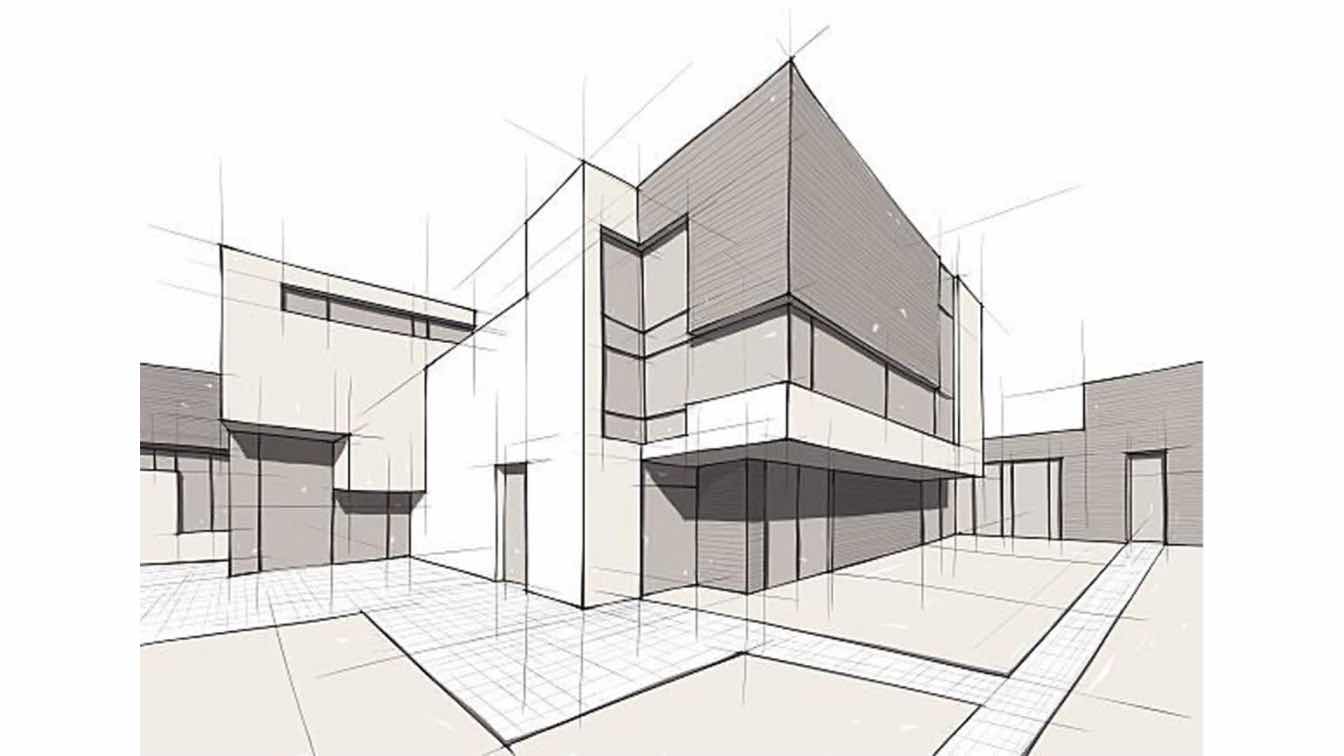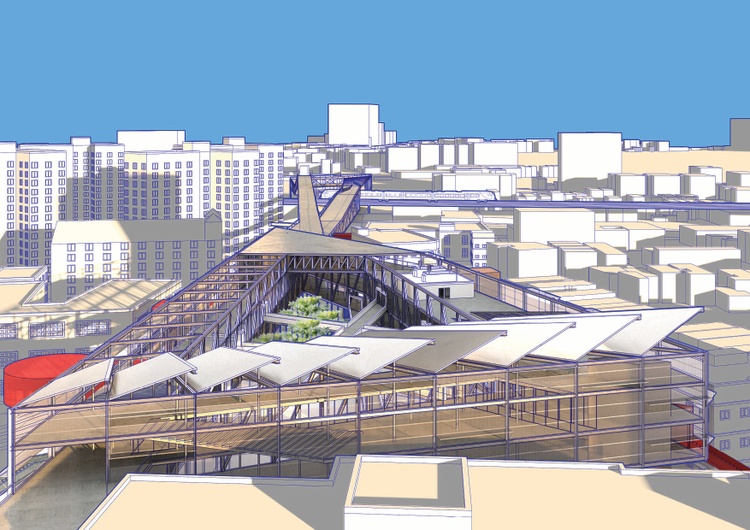The Impact of Technological Advancements on the Layout Practices of Contemporary Architects
The quick development of technological devices has considerably reshaped the design landscape for contemporary architects, cultivating unmatched levels of technology and sustainability. The combination of Structure Details Modeling (BIM), parametric layout, and expert system has not just streamlined cooperation among varied teams but additionally redefined job implementation. Nevertheless, as architects accept these advancements, they are challenged with complex obstacles that might influence their innovative procedures. Exploring these characteristics reveals a nuanced interaction between innovation and traditional layout approaches, triggering a closer evaluation of what the future holds for building techniques.
Development of Architectural Equipment
Just how have building devices changed the design and building and construction processes over the centuries? The advancement of architectural devices has actually significantly impacted the efficiency, accuracy, and imagination of style and building. In old times, engineers count on rudimentary instruments such as plumb bobs, gauging poles, and standard geometry to develop frameworks. These devices laid the structure for early architectural practice, permitting for the construction of iconic structures, albeit with restrictions in precision and complexity.
With the development of the Renaissance, the introduction of the compass and the protractor marked a crucial change. These tools enabled engineers to attain higher accuracy in their layouts, assisting in the development of more elaborate and proportional buildings. The Industrial Revolution better reinvented architectural technique with the introduction of mechanized devices and materials, enabling larger and extra enthusiastic projects.
In the 20th century, the growth of computer-aided design (CAD) software program transformed the landscape as soon as again, supplying engineers with unprecedented capacities in modeling and visualization. Today, advanced devices such as Building Details Modeling (BIM) and parametric design software program continue to press the borders of architectural innovation, allowing a more integrated strategy to design and building and construction processes.
Improved Partnership in Design
As innovation proceeds to develop, boosted collaboration in style has actually ended up being a keystone of contemporary building practice. The combination of electronic tools such as Building Info Modeling (BIM), cloud-based systems, and advanced visualization software application has changed the means architects, engineers, and stakeholders engage throughout the layout process. These tools assist in real-time interaction, enabling groups to share concepts, modifications, and comments instantly, regardless of geographical place.

In addition, interdisciplinary cooperation has been streamlined via these technical improvements, allowing architects to work extra very closely with other professionals, such as urban organizers and ecological specialists. The result is an extra cohesive approach to design that takes into consideration different point of views and expertise. Inevitably, improved collaboration in layout is not simply a trend; it is necessary for producing innovative, practical, and cosmetically pleasing design in an increasingly intricate world.
Sustainability Via Innovation
Sustainability in design has actually increasingly ended up being intertwined with technical advancement, driving the industry toward eco responsible practices - cda architects. Contemporary architects are leveraging innovative innovations to lessen ecological impact while improving the efficiency of structures. One noticeable example is the use of Building Info Modeling (BIM), which enables for specific preparation and resource allocation, decreasing waste throughout building and construction and advertising power efficiency throughout a building's lifecycle
Furthermore, wise materials and energy-efficient systems are being integrated into styles to enhance resource usage. Technologies such as solar batteries and eco-friendly roof harness sustainable energy sources, contributing to decreased carbon footprints. Additionally, the application of expert system in layout procedures makes it possible for engineers to imitate and assess power intake, assisting decisions toward even more lasting end results.
The integration of lasting modern technologies not just lines up with worldwide environmental goals yet likewise satisfies a boosting demand from consumers for environmentally friendly solutions. As architects welcome these technologies, the emphasis moves towards creating rooms that are not only aesthetically pleasing yet additionally functionally sustainable, thereby redefining the criteria of contemporary architecture. This way, innovation functions as a stimulant for sustainability, allowing architects to make structures that respect and boost the natural setting.
Challenges in Implementation
While technical developments in style hold excellent guarantee for boosting sustainability, their application often comes across significant difficulties - cda architects. One primary barrier is the steep discovering curve related to new innovations. Architects and building professionals may require substantial training to effectively use innovative software application and devices, which can postpone project timelines and raise costs
Furthermore, the combination of emerging innovations, such as Structure Details Modeling (BIM) and sustainable products, often requires partnership throughout view multidisciplinary teams. This cooperation can be hindered by distinctions in knowledge, process, and interaction designs, leading to prospective disputes and inadequacies.
Financial constraints further complicate the adoption of ingenious modern technologies. Many architectural firms, particularly smaller ones, may lack the resources to invest in innovative devices, restricting their capability to take on larger firms that can pay for such financial investments.
In addition, regulatory structures and building regulations might not keep pace with technical advancements, producing ambiguity and potential conformity concerns. This difficulty can dissuade architects from totally embracing new technologies, as the threat of non-compliance may surpass the advantages. Therefore, dealing with these implementation challenges is essential for the successful assimilation of technical advancements in modern building methods.
Future Trends in Design
The challenges related to the execution of brand-new technologies in architecture have triggered a reevaluation of future trends within the sector. As designers browse problems such as sustainability, urbanization, and social equity, they are progressively taking on ingenious technologies to boost style efficiency and ecological performance.
One prominent pattern is the integration of fabricated intelligence (AI) in the design procedure. AI devices can examine large datasets to inform style choices, improving both creative thinking and performance. Building Details Modeling (BIM) continues to progress, making it possible for real-time collaboration amongst stakeholders and helping with structured project administration.
Lasting design methods are likewise gaining momentum, with designers concentrating on adaptive reuse and regenerative layout principles that reduce source intake and waste. The incorporation of wise products and renewable resource sources will certainly additionally enhance the durability of structures despite environment change.

Verdict
Technical innovations have actually substantially reshaped architectural layout methods, assisting in enhanced precision, cooperation, and Resources sustainability. The combination of tools such as Building Details Modeling and parametric layout software application, alongside artificial knowledge and wise materials, encourages designers to address intricate difficulties much more efficiently. While implementation might provide particular challenges, the continued advancement of these innovations assures to drive advancement in architecture. Future trends will likely additionally emphasize sustainability and performance, eventually redefining the constructed atmosphere.